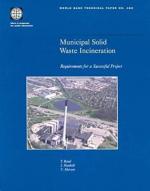|
This section contains 1,687 words (approx. 6 pages at 300 words per page) |

|
Incineration is the thermal destruction of waste. It is as old as throwing food wastes on a wood fire, and in many developing nations, garbage is still routinely burned in drums and boxes on city streets. Modern incineration systems use high temperatures, controlled air, and excellent mixing to change the chemical, physical, or biological character or composition of waste materials. The new systems are equipped with state-of-the-art air pollution control devices to capture particulate and gaseous emission contaminates. There are still many health concerns connected with incineration systems, especially for populations living near incinerators. However, the stringent regulations that have been enacted by federal and state regulators ensure that the design, operation, testing, and maintenance of these systems provide maximum safety and minimum risk to the surrounding area and inhabitants.
In 1992 the United States had 190 operating incinerators with a design capacity of 114,339 tons/day and an annual capacity...
|
This section contains 1,687 words (approx. 6 pages at 300 words per page) |

|


